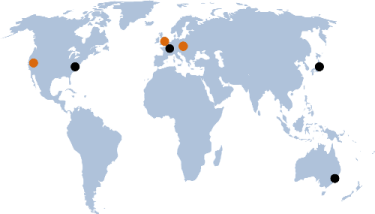comment
We are happy to announce the release of Bolero version 0.2. Bolero is a library that enables writing full-stack applications in F#, whose client side runs in WebAssembly using Blazor.
Install the latest project template with:
1
dotnet new -i Bolero.Templates
Features
Router: full path specification
In Bolero 0.1, you could customize the path for a router using [<EndPoint>]:
1 2 3 4 5 6 7
type Page =
| [<EndPoint "/">]
Home
| [<EndPoint "/article">]
Article of id: int
| [<EndPoint "/list">]
List of page: int * tag: stringIn the above example, the value Article 42 represents the URL /article/42, and the value List(1, "bolero") represents the URL /list/1/bolero.
Bolero 0.2 introduces full path specification. You can now indicate the exact shape of the path with [<EndPoint>], with parameters represented between {braces}. This makes it possible to have several paths that share a common prefix. The {*asterisk} syntax is also supported to indicate the rest of the path.
1 2 3 4 5 6 7 8 9
type Page =
| [<EndPoint "/">]
Home
| [<EndPoint "/article/{id}">]
Article of id: int
| [<EndPoint "/list/{page}">]
List of page: int
| [<EndPoint "/list/{page}/tagged/{*tags}">]
ListTagged of page: int * tags: list<string>In the above example, the value List 2 represents the URL /list/2, and the value ListTagged(2, ["bolero"; "fsharp"]) represents the URL /list/2/tagged/bolero/fsharp.
Bolero 0.1-style simple prefix specification is still supported. See the documentation for more details.
DOM element references
It is sometimes necessary to call JavaScript functions on the DOM element corresponding to a Bolero node. Bolero 0.2 now provides the attribute attr.bindRef to retrieve a reference to the corresponding element. It is typically used in a component. For example, given this JavaScript function:
1 2 3
function focus(elt) {
elt.focus();
}You can call it on your own elements like so:
1 2 3 4 5 6 7 8 9 10 11 12 13 14 15 16 17 18 19 20 21 22 23
open Bolero
open Bolero.Html
open Microsoft.JSInterop // Use Blazor's interop features
/// Interop binding to the JavaScript function
let focus (elt: ElementRef) =
JSRuntime.Current.InvokeAsync("focus", elt) |> ignore
type MyComponent() =
inherit ElmishComponent<Model, Message>()
/// Create an element ref for our input tag
let inputRef = ElementRefBinder()
override this.View model dispatch =
concat [
// Bind the input element
input [attr.bindRef inputRef]
button [
// Call the JavaScript function on the bound element
on.click (fun _ -> focus inputRef.ref)
] [text "Focus the input"]
]Try F# on WebAssembly
I will take this occasion to talk about the improvements that have been done to the Bolero-based Try F# on WebAssembly since its announcement; they've been out for a few weeks, but haven't been mentioned on this blog yet.
We added support for asynchronous code, and in particular HTTP requests.
To run asynchronous code, create a function
AsyncMain : unit -> Async<unit>.To perform HTTP requests within
AsyncMain, useEnv.Http : System.Net.Http.HttpClient.See for example the JSON type provider snippet, which queries the GitHub API to list the repositories in the fsbolero organization.
You can now invoke code completion using Ctrl+Space. It can take several seconds to appear on a bare identifier, but it is quite fast when invoked right after a dot.

Happy coding!







